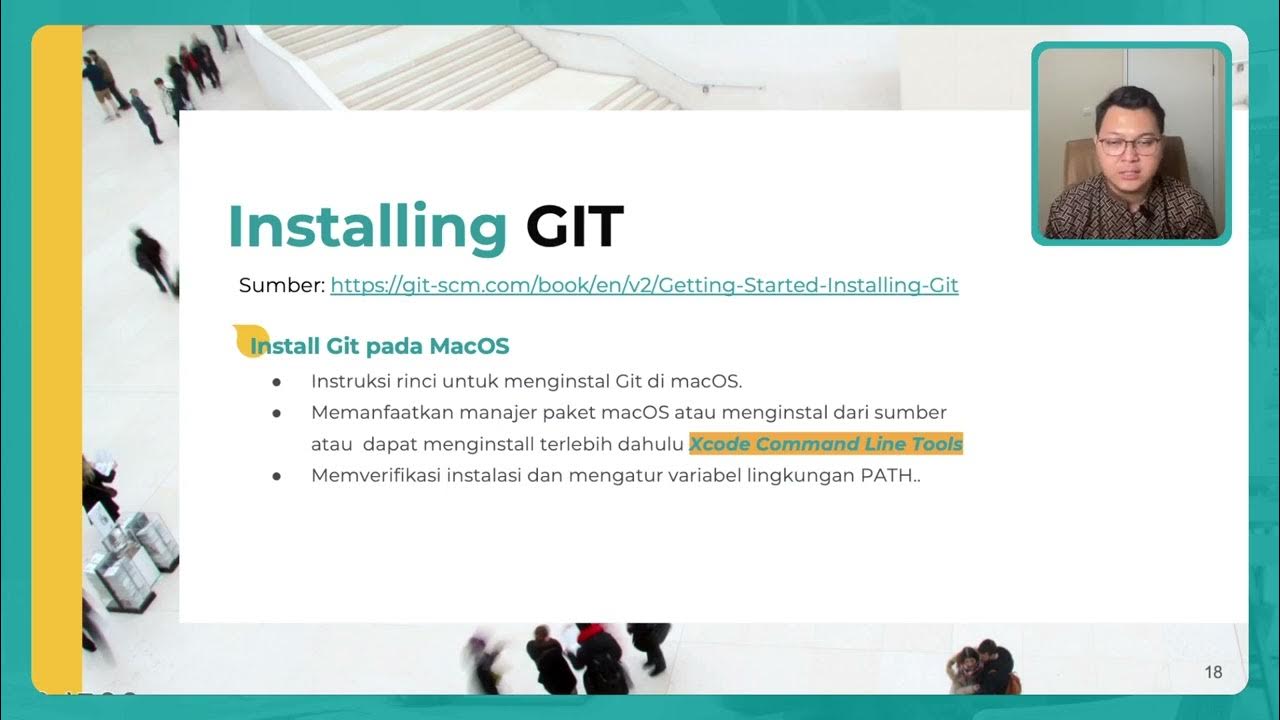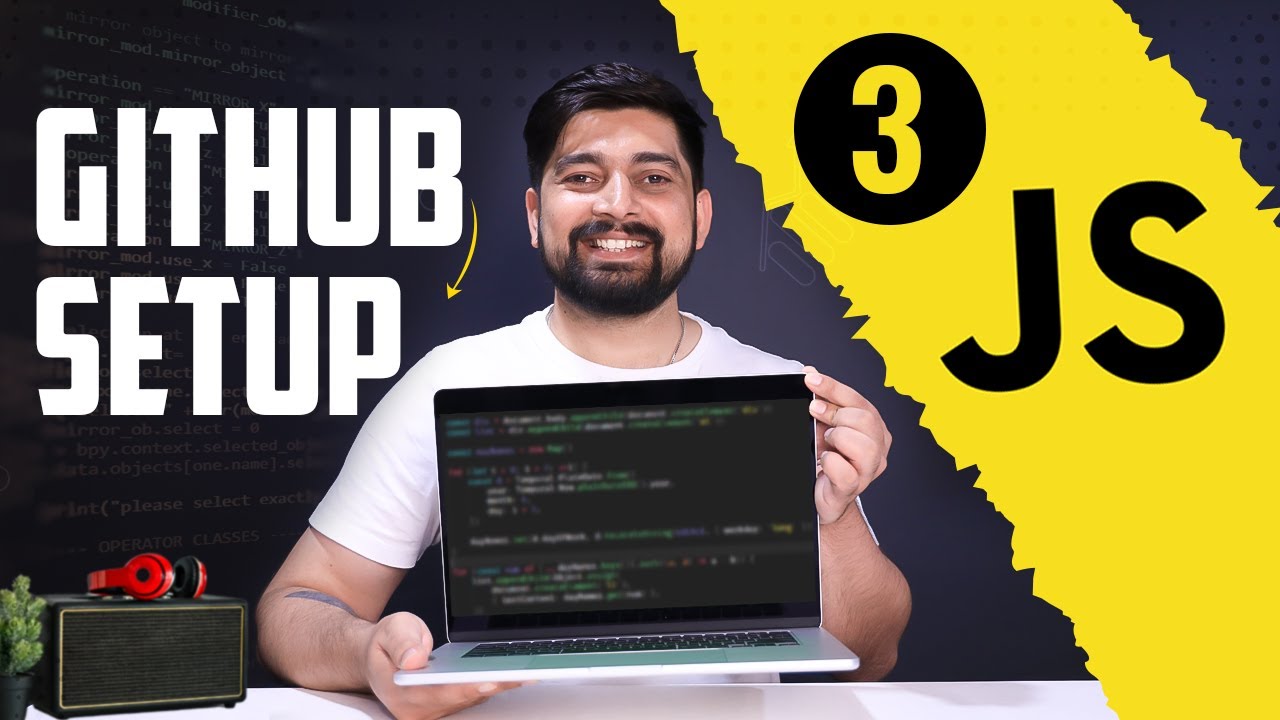Master Git Init: Unlock the Secrets of the Hidden .git Folder in 20 Minutes
Summary
TLDRThis video introduces a Git tutorial series focused on understanding Git's workflow rather than memorizing commands. The instructor covers Git basics, demonstrating the installation process, the difference between Git and GitHub, and key concepts like repositories, version control, and collaboration. The video emphasizes the importance of hands-on learning and highlights how Git tracks changes in folders. The tutorial walks through initializing Git in directories, checking Git status, and introduces staging and committing changes. This is the first step in building a solid foundation for using Git effectively in daily projects.
Takeaways
- 💻 The series focuses on Git, aiming to explain the workflow and behind-the-scenes details rather than memorizing every command.
- 📝 The course combines theory and practical elements, encouraging viewers to follow along and practice Git commands hands-on.
- 🌐 Git has a GUI version, but understanding commands will help users perform better in both terminal and GUI environments.
- ⚙️ Git is a software for version control, while GitHub is a cloud-based service for hosting Git repositories.
- 📂 A repository (repo) is simply a folder containing project files, and Git is used to track changes within these folders.
- 🧪 Initializing Git in a folder (using 'git init') tells Git to start tracking changes in that folder.
- 🔑 The Git command 'git status' is important for checking the state of the repository at any point.
- 🏁 A 'commit' in Git is like a checkpoint in a video game, marking a specific point in the project to which you can return if needed.
- 🚀 The workflow involves creating a working directory, adding files to the staging area ('git add'), and then committing those changes ('git commit').
- 📊 The 'git push' command is used to upload the local repository to a cloud service like GitHub, but this step is done after understanding basic Git commands.
Q & A
What is the main focus of the Git series in the video?
-The main focus of the Git series is to understand the workflow and behind-the-scenes details of how Git works, rather than memorizing every command.
Why is using the terminal emphasized in the video?
-The terminal is emphasized because understanding how commands work in the terminal provides a deeper understanding of Git, which will also help users perform better on GUI platforms.
What is the difference between Git and GitHub as explained in the video?
-Git is a version control software that tracks changes in files, while GitHub is a service that allows you to store and share your Git repositories in the cloud. GitHub is not the only service provider; alternatives like Bitbucket also exist.
What analogy is used to explain Git's role in version control?
-Git is compared to a video game checkpoint system, where you can save your progress at different points and return to a previous state if something goes wrong.
What is a 'repo' in Git, and how is it different from a regular folder?
-A 'repo' (short for repository) is a folder that contains files being tracked by Git. It is different from a regular folder because Git actively monitors changes in it, provided the folder has been initialized as a Git repository.
How do you initialize a folder in Git, and what happens when you do?
-You initialize a folder in Git by running the command `git init`. This creates a hidden `.git` folder that tracks all the changes made in that folder. After initialization, the folder becomes a Git repository.
What does the 'git status' command do?
-The `git status` command checks the current state of the working directory and staging area, showing if there are any changes to commit or if there are untracked files.
What is the purpose of the '.git' folder created during initialization?
-The `.git` folder is a hidden directory that stores all the information about the repository, such as its history, configuration, and objects. It is crucial for Git to track changes, and users should avoid modifying it manually.
What are the steps in Git's basic workflow as described in the video?
-The basic Git workflow involves: 1. Creating a working directory (folder), 2. Adding files to the staging area with `git add`, 3. Committing changes with `git commit` to create a checkpoint, and optionally 4. Pushing the repository to a cloud service like GitHub using `git push`.
What advice does the video give for learning Git effectively?
-The video advises learning the basics first, using Git daily in real-life scenarios, and facing challenges to strengthen your understanding. It recommends solving problems through resources like ChatGPT or Stack Overflow.
Outlines

This section is available to paid users only. Please upgrade to access this part.
Upgrade NowMindmap

This section is available to paid users only. Please upgrade to access this part.
Upgrade NowKeywords

This section is available to paid users only. Please upgrade to access this part.
Upgrade NowHighlights

This section is available to paid users only. Please upgrade to access this part.
Upgrade NowTranscripts

This section is available to paid users only. Please upgrade to access this part.
Upgrade NowBrowse More Related Video

Sub Topic 2

Octopus 2023.4: Source Scripts in Git

Git Tutorial: Fixing Common Mistakes and Undoing Bad Commits

Git and GitHub - 0 Experience to Professional in 1 Tutorial (Part 1)

Day-9 | Git and GitHub | What is GIT ? | What is Version Control ? | #devops #2023 #github #gitlab

Save and work on Github for Javascript | chai aur #javascript
5.0 / 5 (0 votes)